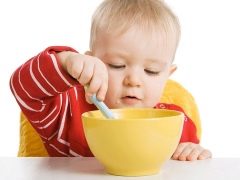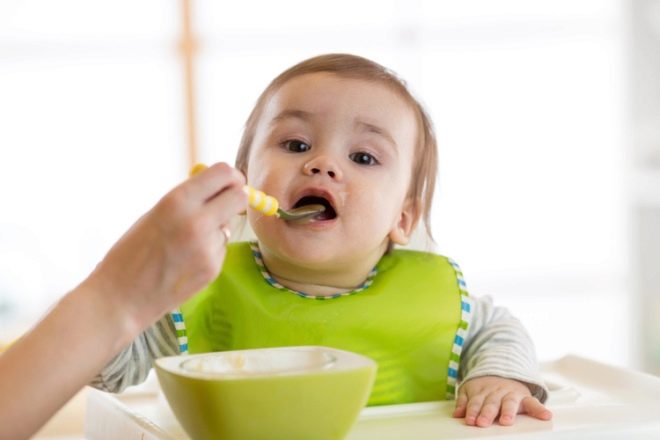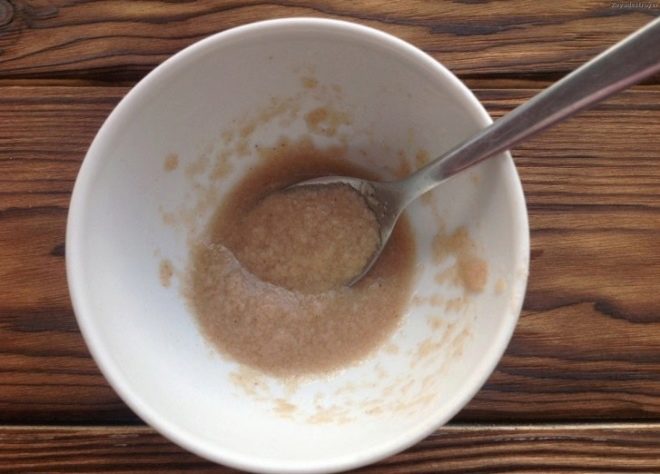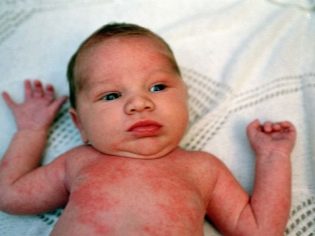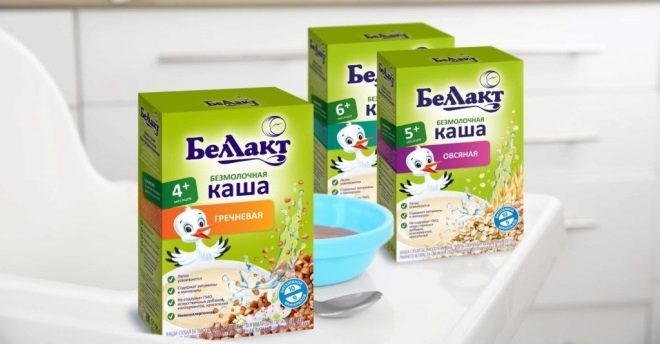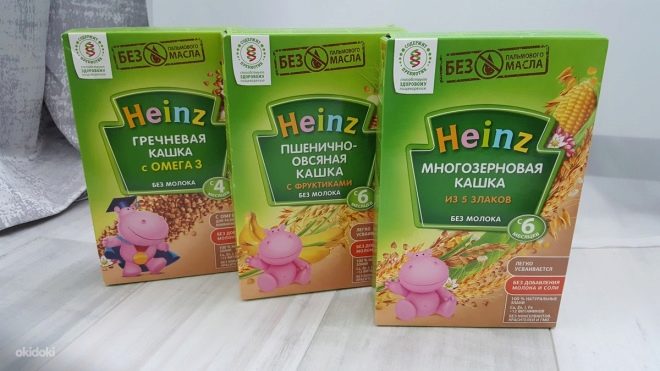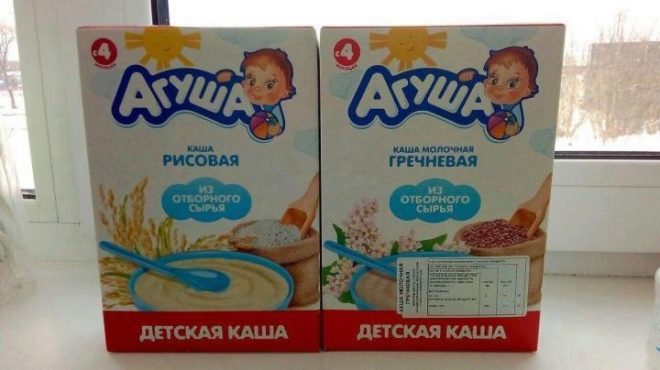Gluten-free cereals for children
Gluten, also called gluten, is one of the proteins found in plant foods. It is abundant in wheat and some other cereals, so if necessary, to exclude this substance from the diet, you need to carefully choose which porridge to offer the child. According to most doctors, the first porridge, which is permissible for an infant to try, must also be gluten-free.
What porridges are not gluten?
The range of cereals that do not include dangerous protein is quite large.
- Fig. This hypoallergenic croup is easily digested, pleasant to the taste and like many kids. It contains a lot of potassium, amino acids, zinc, calcium, lecithin and vitamin compounds.
- Buckwheat. This popular gluten-free cereal is rich in proteins and iron, therefore it benefits in case of low hemoglobin or low weight. She is also loved by many children, and an allergic reaction to buckwheat occurs extremely rarely. Such a pap will be an excellent source of vitamin B1, calcium, copper, magnesium, vitamin PP and other nutrients.
- Corn grits. It is rich in amino acids, vitamin A, selenium, calcium, iron. Due to the high content of dietary fiber consumption of corn porridge reduces fermentation in the intestine and eliminates bloating. Since corn has a lot of polyunsaturated fats, dishes made from such cereals are also useful for the nervous system.
- Millet. From such a gluten-free grain, millet is obtained - cereal rich in beta-carotene, complex carbohydrates, silicon, vitamin E, calcium, lecithin, phosphorus, fiber and other substances.
- Sago. This cereal is made from corn starch or potato starch. It gives the body enough carbohydrates and fiber, as well as a large amount of minerals and choline. Sago porridge has the ability to stimulate the appetite and envelop the intestinal walls.
- Amaranth. This grain contains a lot of healthy fats and starch, pectin, vitamins of group B, magnesium, copper, ascorbic acid and other substances. It is useful for digestion and is a source of valuable amino acids.
- Quinoa. This culture is called pseudo-cereal, but a tasty porridge with many useful properties is prepared from it. It has a fairly large percentage of protein, there are valuable trace elements. From this product get a lot of fiber, folic acid and riboflavin.
Separately, it should be noted that wheat gluten oatmeal does not contain, but the peculiarities of its processing make such a cereal undesirable for the nutrition of patients for whom it is banned.
Eat oatmeal with gluten intolerance is permissible only if the manufacturer on the packaging noted this possibility. Such products are specially processed, therefore they are easier to digest and do not cause intestinal problems.
How and when to start luring?
It is recommended to start feeding babies with gluten-free porridge. If the baby is fed by mom's milk, it is possible to offer him a cereal dish for the first time at 6 months. An earlier introduction is undesirable, because the intestines of a child in the first half of his life are not yet mature enough to digest something other than mother's milk.
Babies on artificial feeding can taste porridge a little earlier. Although on the packages of baby food sometimes there is a mark "from 4 months", doctors advise to introduce porridge in the diet of toddler fed mixtures, not earlier than 5 months of age.
Most often for the first acquaintance choose rice or buckwheat. If babies often have constipation, it is better to prefer buckwheat, and when liquid stools in the menu include rice porridge. A dish for an infant should be monocomponent and dairy-free, in consistency - liquid and homogeneous, not contain sugar, salt and any other additives.
Some mothers decide to cook such porridge on their own, chopping the cereal in a coffee grinder so that it turns into flour, after which it is boiled in water, and then breast milk or formula is added. Other parents choose prefabricated cereal for the first feeding, because for such baby food products selected raw materials are used, which are specially processed. Besides, there is no need to boil powdered porridge - it is enough to dilute it with water in the amount specified by the manufacturer, and the dish for the crumbs in the right amount is ready.
If the baby tries the cereal for the first time, it should be done in the morning feeding in order to monitor the possible negative reaction during the day. For the first test, only 5 grams of porridge is enough. If the child’s chair has not changed, the skin does not turn red, there are no other negative symptoms, the next day the portion is slightly increased.
After the introduction into the diet of rice and buckwheat, the crumb is introduced to corn porridge. Due to more difficult digestion, millet is recommended to be given to children older than a year. Breast-fed baby milk porridge is given no earlier than 9 months of age, and crumbs-artificials are given from 7 months. The introduction of milk porridge in the diet also begins with gluten-free options, that is, buckwheat, corn porridge or rice are the first to be cooked in milk.
Why enter the first?
The main danger of gluten in cereals such as wheat, barley and rye is the risk of an allergic reaction, which is elevated at an early age. In some babies of 6–12 months, gluten consumption provokes a disease called celiac disease. This is an autoimmune pathology in which the small intestine is affected. It occurs in about 0.5–1% of people.
Among the symptoms of gluten intolerance note diarrhea, weight loss, weakness, atopic dermatitis, bloating, regurgitation and nausea. Having noticed any of these symptoms when cereals that contain gluten are introduced into the diet, You need to immediately exclude a new product from the baby’s menu and consult a doctor. He will prescribe special tests that confirm or disprove celiac disease, which will affect further tactics.
It is worth mentioning that gluten-free cereals are shown not only to children with celiac disease. They are used in the diet of children with:
- intestinal diseases;
- food allergies;
- diarrhea of various origins;
- flatulence;
- intolerance to some products;
- autoimmune pathologies;
- some neurological diseases.
Many young patients with such problems, doctors recommend limiting the use of gluten and leave the menu only rice, corn and other safe cereals.
Top manufacturers
Gluten-free cereals are in the range of any manufacturer of baby food, but not all of them like kids and their mothers. Below is a list of the most popular brands.
- Bebi Cereal products of this brand are pleasant to the taste, diverse, include probiotics and minerals. No sugar added. In the assortment there are cereals with different fillings. Among the gluten-free kasha, the manufacturer offers milkless buckwheat, milk-free rice, milk buckwheat, milk-free corn, rice with apple and pumpkin, 5 types of milk rice porridge, milk corn porridge.
- Nestle. Gluten-free cereals of this manufacturer are enriched with bifidobacteria, which has a positive effect on the state of microflora and stool. They have a natural taste, pleasant smell, easy breeding, the average price category. The composition additionally includes minerals and vitamin substances. However, the manufacturer notes that traces of gluten in such porridges are possible, because on the same equipment they produce wheat, multi-cereal and other powder mixtures that contain gluten.
- "Bellakt". The products of this brand are varied, quickly divorced, and of good quality. The manufacturer notes that gluten is not in such non-dairy cereals: buckwheat, rice, buckwheat with apple and rice-buckwheat with prunes. Among milk porridges, Bellakt gluten does not contain the entire line of rice porridges, including products with additives (pumpkin, apple, banana, carrot).
- Heinz. The range of this manufacturer has gluten-free cereals from one cereal, called low-allergenic. They have a pleasant taste, no sugar, starch and salt in the composition, in addition there is a vitamin-mineral complex and inulin. The powder base is easily diluted to obtain a uniform dish without lumps. At the same time in the line of dairy and delicious porridges, as well as dairy products with fruit additives, traces of gluten may be present, even if they are based on buckwheat, rice or corn.
- Hipp. Such cereal products are made from environmentally friendly organic raw materials. They are palatable, enriched with vitamin B1, easily divorced. The manufacturer indicates in large letters "gluten-free" on packages of dairy buckwheat, dairy rice "banana-peach", dairy-free buckwheat, dairy-free rice, dairy-free corn and milk-free buckwheat with fruit porridge.
- "Agusha". In the line of cereals of this brand there are rice with milk and rice-corn with a banana and milk. They are quickly diluted with water, pleasant to the taste, do not contain preservatives and other harmful additives, are enriched with vitamins, but, according to information from the manufacturer, may include a small amount of gluten.
Gluten intolerance
All healthy babies who are introduced to gluten-free cereals can try gluten cereals later. Oatmeal porridge offers crumbs from 8 months of age, wheat - from 8–9 months, manna - from the year, barley - from 1.5 years, pearl barley - from the age of three.
First, any of these kasha should appear on the table of the toddler in the dairy-free version, because milk also belongs to serious allergens. When the child tastes each of the species separately, you can include in the menu and multigrain cereal.
Introducing gluten products in the diet of an infant baby should be extremely careful not to miss the symptoms of allergies and cancel dangerous cereals in time. If the crumbs revealed gluten intolerance, he will have to give up croup containing gluten in the future. The doctor will prescribe a gluten-free diet for this child.
It provides for the exclusion from the ration of not only cereals in which there is gluten (oatmeal, manna, wheat), but also bread, pasta, different types of pastries. Fortunately, nowadays, many manufacturers offer a replacement for such products, producing gluten-free counterparts, among which are cookies, pasta, waffles, cereal, bread, desserts, and so on.
Dr. Komarovsky will talk about what gluten is in the next video.
